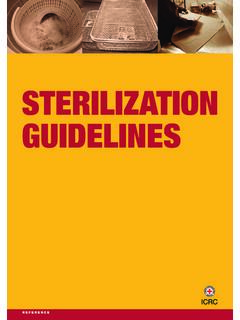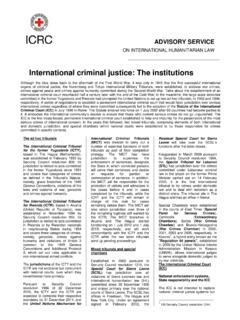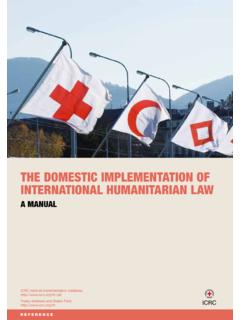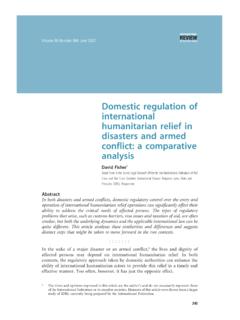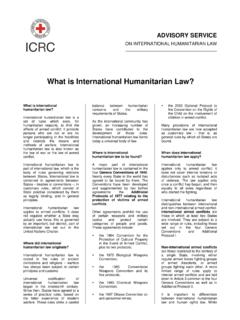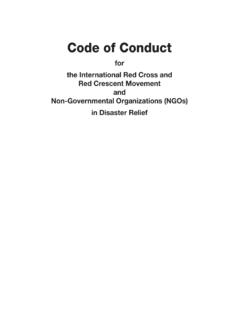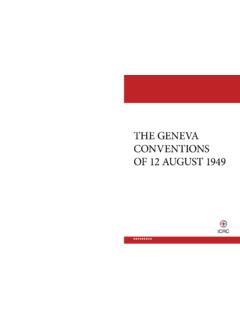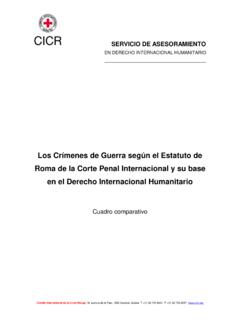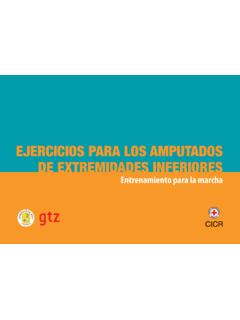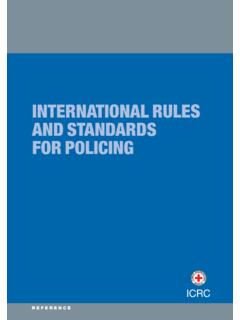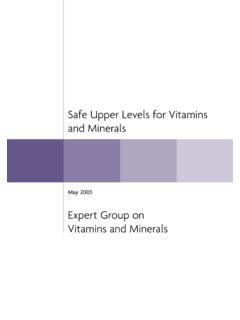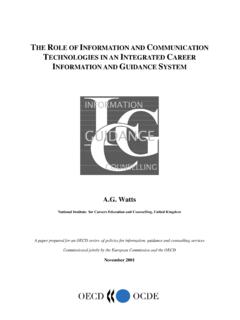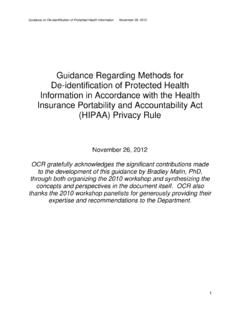Transcription of Interpretive guidance on the notion of direct ...
1 Interpretive guidance on the notion of direct direct participation in hostilities participation in hostilities under international humanitarian law Nils Melzer, Legal adviser, ICRC. ISBN 978-2-940396-04-7. 0990/002 5,000. ICRC. MISSION. The International Committee of the Red Cross (ICRC) is an impartial, neutral and independent organization whose exclusively humanitarian mission is to protect the lives and dignity of victims of armed conflict and other situations of violence and to provide them with assistance. The ICRC also endeavours to prevent suffering by promoting and strengthening humanitarian law and universal humanitarian principles.
2 Established in 1863, the ICRC is at the origin of the Geneva Conventions and the International Red Cross and Red Crescent Movement. It directs and coordinates the international activities conducted by the Movement in armed conflicts and other situations of violence. International Committee of the Red Cross 19, avenue de la Paix 1202 Geneva, Switzerland T + 41 22 734 60 01 F + 41 22 733 20 57. E-mail: ICRC, May 2009. Interpretive guidance on the notion of direct participation in hostilities under international humanitarian law Nils Melzer, Legal adviser, ICRC. 2 direct PARTICIPATION IN HOSTILITIES. CONTENTS. FOREWORD 4.
3 ACKNOWLEDGEMENTS 8. INTRODUCTION 9. 1. Purpose and nature of the Interpretive guidance 9. 2. The issue of civilian participation in hostilities 11. 3. Key legal questions 12. PART 1: RECOMMENDATIONS OF THE ICRC 15. PART 2: RECOMMENDATIONS AND COMMENTARY 19. A. The concept of civilian 20. I. The concept of civilian in international armed conflict 20. 1. Mutual exclusiveness of the concepts of civilian, armed forces and lev e en masse 20. 2. Armed forces 21. 3. Lev e en masse 25. 4. Conclusion 26. II. The concept of civilian in non-international armed conflict 27. 1. Mutual exclusiveness of the concepts of civilian, armed forces and organized armed groups 27.
4 2. State armed forces 30. 3. Organized armed groups 31. 4. Conclusion 36. III. Private contractors and civilian employees 37. 1. Particular difficulties related to private contractors and civilian employees 37. 2. International armed conflict 38. 3. Non-international armed conflict 39. 4. Conclusion 40. B. The concept of direct participation in hostilities 41. IV. direct participation in hostilities as a specific act 43. 1. Basic components of the notion of direct participation in hostilities 43. 2. Restriction to specific acts 44. 3. Conclusion 45. CONTENTS 3. V. Constitutive elements of direct participation in hostilities 46.
5 1. Threshold of harm 47. 2. direct causation 51. 3. Belligerent nexus 58. 4. Conclusion 64. VI. Beginning and end of direct participation in hostilities 65. 1. Preparatory measures 65. 2. Deployment and return 67. 3. Conclusion 68. C. Modalities governing the loss of protection 69. VII. Temporal scope of the loss of protection 70. 1. Civilians 70. 2. Members of organized armed groups 71. 3. Conclusion 73. VIII. Precautions and presumptions in situations of doubt 74. 1. The requirement of feasible precautions 74. 2. Presumption of civilian protection 75. 3. Conclusion 76. IX. Restraints on the use of force in direct attack 77.
6 1. Prohibitions and restrictions laid down in specific provisions of IHL 77. 2. The principles of military necessity and humanity 78. 3. Conclusion 82. X. Consequences of regaining civilian protection 83. 1. Lack of immunity from domestic prosecution 83. 2. Obligation to respect IHL 84. 3. Conclusion 85. 4 direct PARTICIPATION IN HOSTILITIES. Foreword The protection of civilians is one of the main goals of international humanitarian law. Pursuant to its rules on the conduct of hostilities, the civilian population and individual civilians enjoy general protection against the effects of hostilities. Accordingly, the law obliges the parties to an armed conf lict to distinguish, at all times, between the civilian population and combatants and to direct operations only against military targets.
7 It also provides that civilians may not be the object of deliberate attack. In the same vein, humanitarian law mandates that civilians must be humanely treated if and when they find themselves in the hands of the enemy. This overarching norm finds expression in many provisions of humanitarian law, including those prohibiting any form of violence to life, as well as torture or cruel, inhuman or degrading treatment. Unusual as it may seem today, the comprehensive protection of civilians was not always a main focus of international humanitarian law. Its origins, at least in terms of treaty rules, lie at a time when civilian populations were largely spared from the direct effects of hostilities and actual fighting was carried out only by combatants.
8 In 1864, when the first Geneva Convention was adopted, armies faced off on battlefields with clearly drawn frontlines. It was the suffering of soldiers, often tens of thousands of them who lay wounded or dying after a military engagement, that needed to be alleviated. Only later, when technological innovations in weaponry started causing massive civilian suffering and casualties in war, did the protection of civilians also need to be addressed. Over time, and particularly after the Second World War, the law also had to regulate the consequences of more and more frequent direct participation by civilians in hostilities.
9 Two situations were emblematic: first, wars of national liberation in which government forces faced off against irregular . armed formations fighting for the freedom of colonized populations. In 1977, Additional Protocol I recognized that such wars could under certain circumstances be deemed international in character. A second situation has become prevalent and remains of great concern today: armed FOREWORD 5. conflicts not of an international character waged between government forces and organized non-State armed groups, or between such groups, for political, economic, or other reasons. It hardly needs to be said that these types of conflict, in which parts of the civilian population are effectively transformed into fighting forces, and in which civilians are also the main victims, continue to cause untold loss of life, injury and destruction.
10 International humanitarian law has addressed the trend towards increased civilian participation in hostilities by providing a basic rule, found in both Additional Protocols to the Geneva Conventions, pursuant to which civilians benefit from protection against direct attack unless and for such time as they take a direct part in hostilities . It is the meaning of this notion direct participation in hostilities that the present Interpretive guidance seeks to explain. In examining the notion of direct participation in hostilities the ICRC not only had to face longstanding dilemmas that had surrounded its practical application ( , can a person be a protected farmer by day and a targetable fighter at night?)
